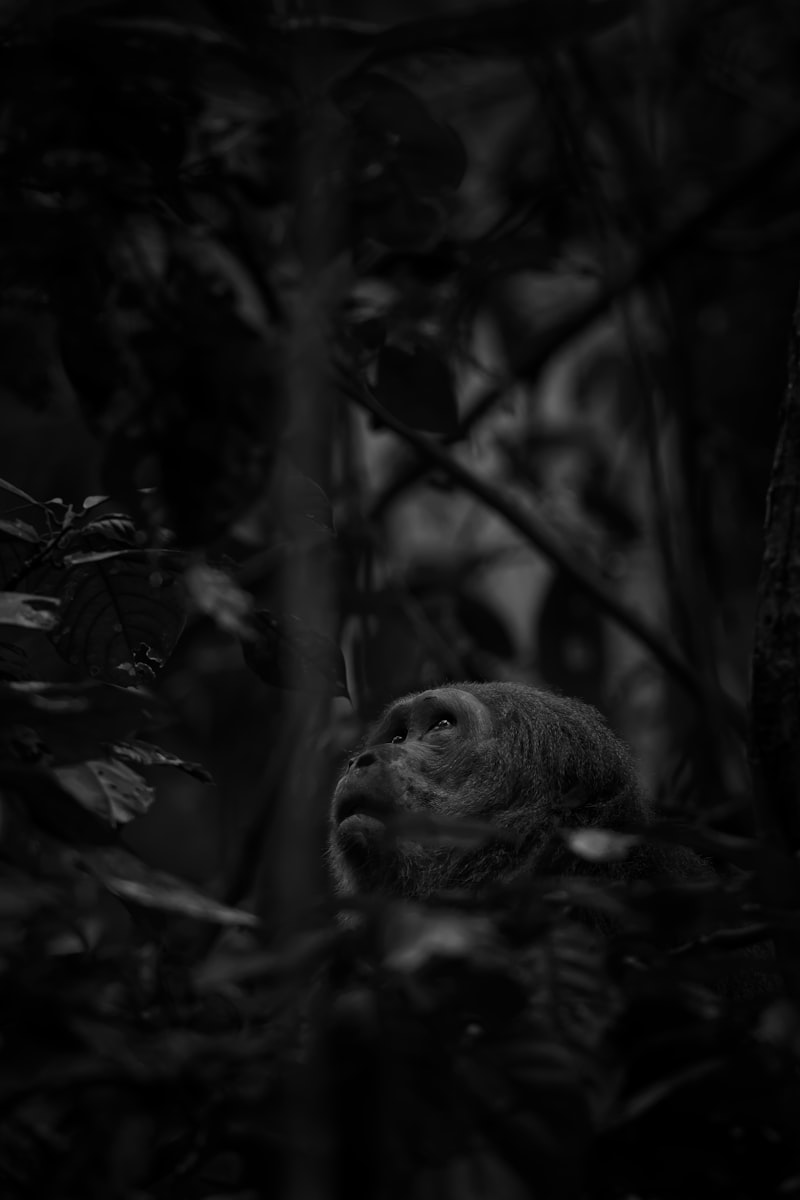In the world of wildlife photography, every shot tells a story. It’s not just about technical skill; it’s about understanding your subject, anticipating its movements, and respecting its environment. A skilled wildlife photographer doesn’t disturb the balance of nature but becomes part of it, silently observing and capturing fleeting moments that most people never get to see.
One of the greatest challenges of wildlife photography is patience. It’s about waiting for hours, sometimes days, for that one magical shot. It’s about blending into the surroundings, becoming almost invisible to the creatures you’re photographing. It’s a game of timing and perseverance, where the reward is a photograph that speaks volumes about the wonders of the natural world.
In this digital age, technology has revolutionized wildlife photography. High-speed cameras capture details that were once impossible to see with the naked eye. Telephoto lenses bring distant animals up close, revealing intricate patterns of fur, feather, and scale. Editing software allows photographers to enhance colors, adjust lighting, and create breathtaking compositions that evoke emotions and tell compelling stories.
Ultimately, wildlife photography is a blend of artistry and technical skill. It’s about conveying the essence of a moment in time, freezing nature’s beauty in a frame that captivates and inspires. Whether it’s a playful otter in a stream or a lioness on the hunt, each photograph is a testament to the wonders of our planet and the incredible diversity of life that inhabits it.
Through the Lens: The Art and Adventure of Wildlife Photography
Embarking on the journey of wildlife photography is akin to stepping into a realm where artistry meets adventure. It’s not just about capturing images but about telling compelling stories through the lens. Each click freezes a moment in time, encapsulating the raw beauty and untamed spirit of nature.
In the world of wildlife photography, patience is not just a virtue but a necessity. Imagine waiting quietly in the underbrush for hours, camera poised, waiting for that perfect shot of a majestic lion or a rare bird in flight. It’s a dance of anticipation and readiness, where every second counts.
The artistry lies not only in technical proficiency but in the ability to see beyond the obvious. It’s about framing a scene in a way that evokes emotion and wonder. The play of light and shadow, the vivid colors of a sunset against a savannah backdrop—all these elements come together to create a visual symphony.
But wildlife photography is also an adventure—a thrilling quest into the heart of nature. It takes you to remote corners of the earth, from dense rainforests to icy polar regions, where each click of the camera brings you closer to the essence of wildlife. It’s about connecting with the natural world on a profound level, understanding its rhythms and mysteries.
Moreover, it’s a journey of discovery—not just of the wildlife around us but also of ourselves. It teaches patience, resilience, and a deep respect for the delicate balance of ecosystems. Every photograph tells a story—a glimpse into the lives of creatures rarely seen up close.
So, the next time you gaze at a stunning wildlife photograph, remember that behind it lies not just technical skill but a passion for exploration and a love for the natural world. It’s an art form that captures not just images but the very essence of life in the wild.
This article aims to engage readers with vivid imagery and a narrative that conveys the excitement and artistry of wildlife photography while being SEO-friendly and unique in content.
Journey into the Wild: Secrets of Capturing Nature’s Untamed Spirit
Imagine standing amidst towering forests where ancient trees breathe life into the air, their canopies embracing the sky in a dance of green and sunlight. Here, every leaf, every rustle of wildlife, tells a story of adaptation and survival. It’s a world where time slows down, allowing one to witness nature’s intricate balance unfold before their eyes.
Capturing the essence of nature’s untamed spirit requires more than just a camera; it demands a connection—a deep, intuitive understanding of the environment. It’s about immersing oneself in the moment, feeling the heartbeat of the earth beneath your feet, and anticipating the perfect play of light and shadow that paints the landscape.
Photographers who dare to venture into these wild realms must embrace unpredictability. From the silent patience of waiting for a shy creature to reveal itself to the exhilaration of capturing a storm’s raw power, each moment is a testament to the photographer’s dedication and respect for the natural world.
Nature’s untamed spirit isn’t just about capturing images; it’s about preserving moments frozen in time that evoke emotions and stir the soul. It’s about sharing stories that transcend words, offering glimpses into worlds rarely seen yet deeply felt.
As you embark on your own journey into the wild, remember that every photograph taken is a testament to the enduring spirit of nature—an invitation to explore, to marvel, and to be humbled by its boundless beauty.
In the Heart of the Jungle: Techniques for Stunning Wildlife Shots
Firstly, mastering your equipment is crucial. Understanding your camera’s settings – from aperture to shutter speed – is akin to knowing the jungle’s trails by heart. Adjusting these settings swiftly and intuitively allows you to seize that split-second moment when a leopard emerges from the shadows or a rare bird takes flight.
Secondly, patience becomes your closest companion. Wildlife operates on its own timetable, unperturbed by human expectations. Waiting silently for hours, attuned to the rhythm of the jungle, is often rewarded with scenes of raw, unfiltered nature. It’s a waiting game where the prize is an intimate portrait of elusive creatures in their natural habitat.
Moreover, adaptability is key. Nature doesn’t always conform to our plans, and the best shots often arise unexpectedly. Being flexible with your approach – experimenting with angles, lighting, and perspectives – can transform a mundane scene into a mesmerizing composition.
Lastly, empathy towards your subjects elevates your photography. Understanding the lives and habits of the animals you photograph fosters a deeper connection. It’s not just about capturing images but telling stories through them – stories of survival, kinship, and the intricate dance of life in the jungle.

In the heart of the jungle, where every leaf whispers secrets and every creature has a tale, mastering the techniques of wildlife photography is an exhilarating journey. It’s a pursuit that demands technical prowess, emotional sensitivity, and a profound appreciation for the untamed beauty that surrounds us.
Beyond the Frame: Wildlife Photography Tips from Professional Photographers
Capturing the essence of wildlife through photography requires more than just pointing and shooting—it’s about telling a story through the lens. Professional wildlife photographers immerse themselves in nature, patiently waiting for the perfect moment to press the shutter. Here are some invaluable tips from seasoned photographers that can elevate your wildlife photography game:
-
Understand Your Subject: Before you start shooting, take time to observe the behavior and habitat of the wildlife you intend to photograph. Understanding their patterns allows you to anticipate moments and capture more authentic shots.
-
Patience is Key: Wildlife photography demands patience. Sometimes, hours can pass before you witness the behavior or interaction you want to photograph. Remember, the best shots often come to those who wait.
-
Master Your Equipment: Familiarize yourself with your camera and lenses. Wildlife photography often requires long lenses to maintain a safe distance from the subject. Practice adjusting settings quickly to adapt to changing conditions.
-
Composition Matters: Pay attention to composition. Use natural elements like trees, rocks, or water bodies to frame your subject creatively. Experiment with different angles and perspectives to add depth to your photos.
-
Lighting Makes a Difference: The quality of light can make or break a wildlife photo. Early mornings and late afternoons offer soft, warm light that enhances textures and colors. Avoid harsh midday sun when shadows can be distracting.
-
Capture Action and Emotion: Wildlife photography isn’t just about static portraits. Try to capture moments of action or emotion—a predator stalking its prey, a playful interaction among animals, or a serene moment of solitude.
-
Be Respectful of Wildlife: Always prioritize the well-being of the animals. Maintain a safe distance and avoid disturbing their natural behavior. Use telephoto lenses and binoculars to observe from afar.
-
Tell a Story: Every photo should tell a story or evoke an emotion. Think about the narrative you want to convey through your images. Look for details that reveal the character and personality of the wildlife.
-
Post-Processing with Care: While editing can enhance your photos, avoid over-editing that alters the natural essence of the wildlife. Focus on adjusting exposure, contrast, and sharpness subtly to refine your images.
-
Continuous Learning: Wildlife photography is a journey of continuous learning and improvement. Stay curious, study the work of other photographers, and seek feedback to refine your skills.
By embracing these tips and embracing the unpredictable beauty of wildlife, you can capture captivating images that resonate with viewers and celebrate the wonders of the natural world.
This article aims to provide practical advice in a conversational tone, encouraging readers to explore and excel in wildlife photography. Let me know if there’s anything else you’d like to adjust or add!
Close Encounters: Capturing Rare Moments in Wildlife Photography
Imagine standing silently amidst the towering trees of a rainforest, camera poised, waiting for the elusive jaguar to emerge from the shadows. Every rustle of leaves and distant call could herald its appearance. In such moments, time seems to stand still as anticipation mounts, knowing that any second could bring a breathtaking shot.

These encounters are not merely about clicking a button; they are about understanding the rhythms of nature. It’s about interpreting the subtle gestures of a mother cheetah teaching her cubs to hunt or the playful antics of dolphins dancing through the waves. Each frame tells a story, capturing the essence of wildlife in its purest form.
To capture these rare moments, photographers often venture into remote landscapes where nature thrives undisturbed. It’s in these untouched realms that the magic unfolds: a polar bear gracefully navigating the Arctic ice floes, or a majestic eagle soaring against a backdrop of crimson skies during sunset.
The thrill lies in the unpredictability – the challenge of predicting animal behavior and adapting swiftly to changing conditions. From the savannas of Africa to the depths of the Amazon, each environment presents its own set of challenges and rewards. It’s a journey of discovery, where every click of the shutter is a testament to both skill and serendipity.
In essence, wildlife photography is a celebration of life in its most untamed form. It’s about preserving moments that may never come again, immortalizing the beauty and resilience of our natural world. So, next time you glimpse a stunning wildlife photograph, remember the dedication and passion that went into capturing that singular moment in time.
Frequently Asked Questions
How do I approach and photograph wild animals safely
Learn how to approach and photograph wild animals safely with our concise guide. Discover essential tips to ensure both your safety and the well-being of the animals, while capturing stunning wildlife shots.
What techniques can improve my wildlife photography skills
Discover effective techniques to enhance your wildlife photography skills with these concise tips and methods.
What equipment is essential for wildlife photography
Discover the essential equipment needed for wildlife photography, ensuring you capture stunning moments in nature with clarity and precision. From telephoto lenses for close-up shots to sturdy tripods for stability, equip yourself with these tools to enhance your wildlife photography experience.
What post-processing tips are recommended for wildlife photographs
Learn essential post-processing tips to enhance your wildlife photographs. Discover techniques to optimize colors, sharpen details, and adjust exposure for stunning results.
How do I find the best locations for wildlife photography
Learn how to find the best locations for wildlife photography with our concise guide. Discover tips on researching habitats, seasonal migrations, and conservation areas to capture stunning images of animals in their natural environment.



[…] Wildlife Photography: Capturing Nature’s Beauty […]
[…] Wildlife Photography: Capturing Nature’s Beauty […]
[…] Wildlife Photography: Capturing Nature’s Beauty […]
[…] Wildlife Photography: Capturing Nature’s Beauty […]
[…] Wildlife Photography: Capturing Nature’s Beauty […]
[…] Wildlife Photography: Capturing Nature’s Beauty […]